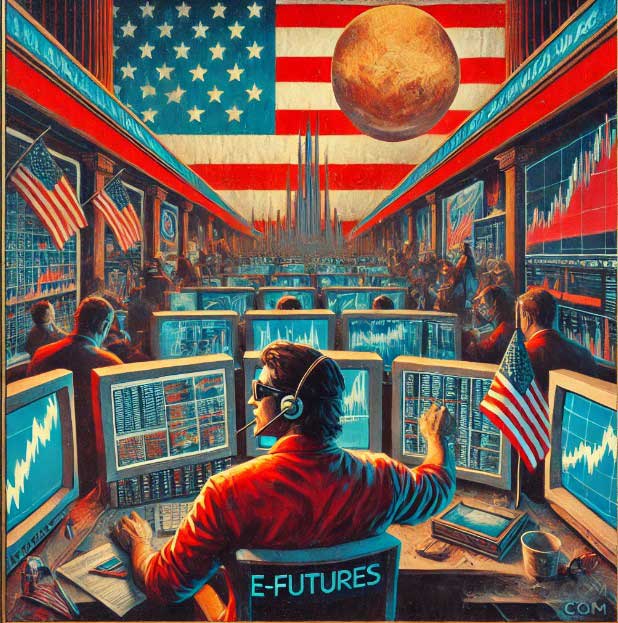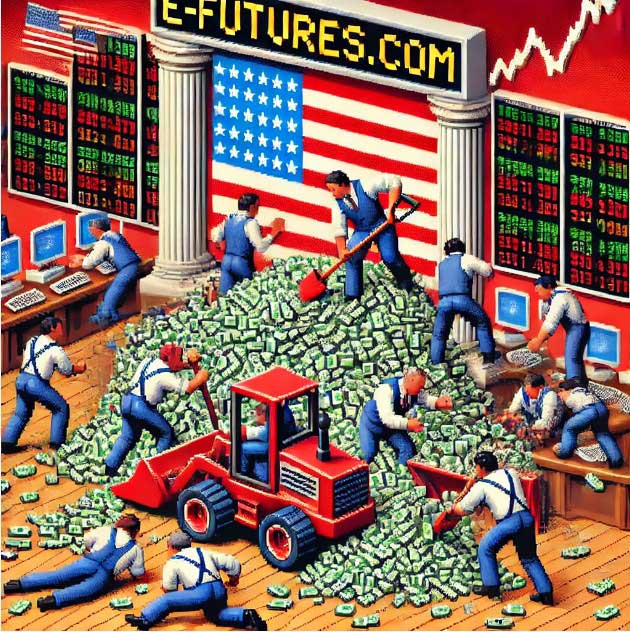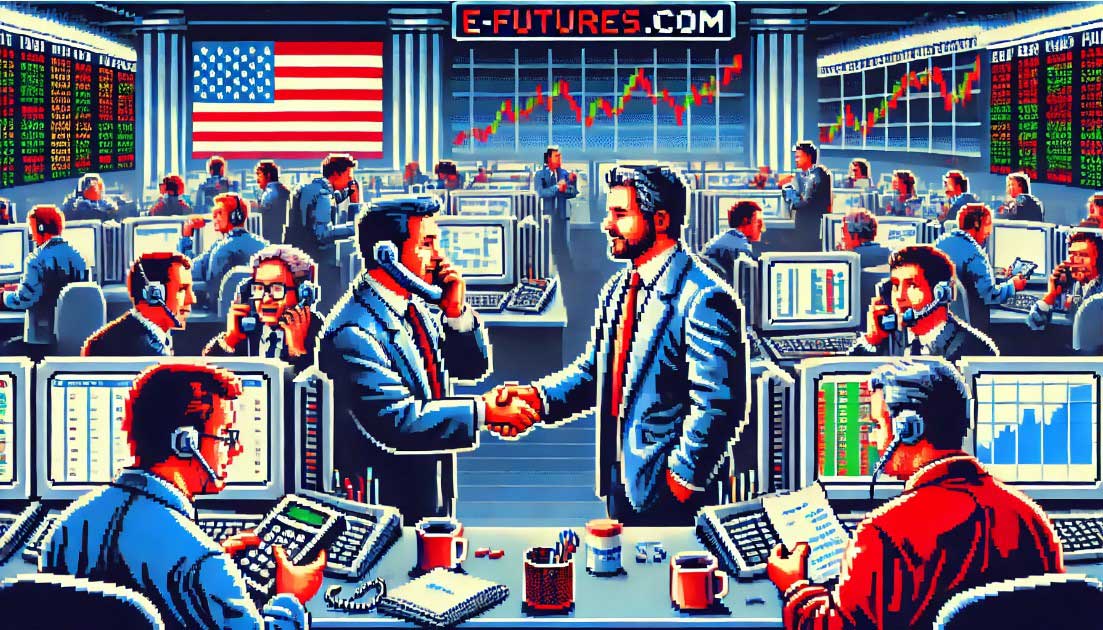Futures traders often experience unique demands on their time due to the nature of the market, which operates nearly 24 hours a day, five days a week. For a professional futures trader, time allocation is essential. Daily routines may vary between traders but commonly follow a structure based on the cycles of futures trading. Traders start early, often before markets open, around 5:00-6:00 AM EST for those based in the United States.
A typical day begins with analyzing overnight market activity. Futures trading time before the U.S. market opens is crucial, as global economic events, geopolitical news, and economic data from international markets influence futures prices. Traders often review financial news, economic data releases, and earnings reports to gauge market sentiment. This analysis might last anywhere from 30 minutes to 1-2 hours, depending on the number of assets being tracked.
After this initial analysis, futures traders monitor pre-market movement, watching for price action trends and identifying entry and exit points. During the trading session, which can run from 9:30 AM to 4:00 PM EST for U.S.-based equity futures, traders need to be alert and decisive. This window is when most trades occur, requiring focus and prompt decision-making. Traders typically end their day by reviewing their trades, assessing performance, and documenting insights to refine their strategies.
Balancing Analysis and Execution
A critical part of futures trading time lies in balancing analysis and trade execution. Analysis includes studying charts, technical indicators, economic data, and global events. Experienced traders may dedicate around 60-70% of their daily routine to analysis, with the remaining time reserved for executing trades and making real-time adjustments to positions.
The time spent on analysis depends on trading strategy and market conditions. A swing or position trader, for example, might dedicate more time to research and hold positions for days or weeks, requiring less constant monitoring. In contrast, day traders or scalpers, who open and close multiple positions within minutes or hours, often focus more on execution, monitoring live data continuously throughout the day.
Time Management for New Futures Traders
New traders need to recognize the importance of disciplined time management. Early in their journey, much of their futures trading time will go towards learning and strategy development rather than active trading. Here’s how a new trader can approach time management:
- Pre-Market Preparation (1-2 hours): Begin with market analysis, reviewing news, economic indicators, and relevant futures data. Start tracking a manageable number of assets and familiarize yourself with their price patterns, daily volumes, and volatility profiles.
- Active Trading (3-4 hours): For those beginning with day trading, focus on the first few hours of the U.S. session (9:30-11:30 AM EST) as these hours are known for high liquidity and volatility, offering prime opportunities for shorter trades.
- Post-Market Review (30 minutes – 1 hour): After the market closes, review the day’s trades, analyze successes and mistakes, and document observations. This is vital for understanding performance and adapting future strategies.
New futures traders should expect to spend several hours daily learning, whether that’s through technical analysis, market research, or paper trading (simulated trading). As they become more experienced and confident, the time allocation can shift more toward execution and fine-tuning their strategy.
The Learning Curve in Futures Trading
One of the biggest challenges in futures trading is the steep learning curve. Unlike equities, futures trading involves understanding margin, leverage, contract specifications, and expiration dates, all of which require a substantial learning investment. New traders often need several months of focused study and practice to gain a solid understanding of the markets. A future trader new to the industry will encounter various technical analysis tools, such as candlestick patterns, moving averages, and RSI indicators, which require time and practice to master.
Additionally, futures traders must familiarize themselves with risk management principles, such as position sizing, stop-loss orders, and hedging techniques, which play a vital role in limiting potential losses. Traders often find that maintaining a trading journal helps accelerate the learning process, as it provides insights into personal trading habits, strengths, and weaknesses.
Mentorship for New Futures Traders
For new traders, mentorship can provide invaluable guidance and support during their initial futures trading time. A mentor helps new traders avoid common pitfalls, develop sound trading strategies, and better understand market psychology. Here are some essential aspects to consider in mentorship:
- Experienced Mentor: Seek a mentor who has extensive experience in futures trading and a track record of profitable trades. They should be able to provide insights into various trading strategies and guide you in managing risk.
- Focus on Risk Management: Good mentors emphasize the importance of risk management, showing new traders how to protect capital, set appropriate stop-loss orders, and avoid over-leveraging positions.
- Personalized Feedback: Mentorship should involve constructive feedback. This includes reviewing trade setups, discussing decision-making processes, and suggesting improvements. Ideally, mentors help new traders analyze past trades, uncover areas for improvement, and adapt to different market conditions.
- Trade Simulation: Some mentors incorporate paper trading or simulation trading sessions, where the mentor can observe the new trader’s performance and provide real-time feedback. This can be especially helpful for those struggling with live market pressures.
Some futures brokers offer mentorship programs, which can be a valuable resource for new traders. These programs often pair new traders with experienced professionals who offer advice on trading strategies and market analysis, providing a solid foundation for growth.
The Role of Technology and Automation
Many futures traders utilize technology and automation to maximize efficiency during trading hours. New traders can benefit from understanding how trading platforms, alerts, and automated strategies can improve productivity. Automated trading, for instance, can execute trades based on pre-set conditions, helping to ensure consistency and reduce emotional bias. However, for beginners, it’s essential to first understand manual trading thoroughly, as automation requires a solid grasp of trading strategies and market behaviors.
Time management also involves learning to utilize tools such as:
- Economic Calendar: A calendar helps traders keep track of major economic events, earnings reports, and global data releases. By planning trades around high-impact events, traders can better anticipate volatility.
- Charting Software: Software with robust charting tools is crucial for analyzing price patterns and setting technical indicators.
- Trade Alerts: Alerts for key price levels, news events, and order executions help traders stay informed and make timely decisions without needing to monitor screens constantly.
Managing Futures Trading Time and Avoiding Burnout
Trading is mentally and emotionally demanding, particularly when managing large positions or facing losses. Establishing a routine that balances work and personal time can help traders avoid burnout. Here are some strategies:
- Set Breaks During the Day: Take short breaks between trades to avoid fatigue and regain focus, particularly if trading in the fast-paced environment of day trading.
- Define “On” and “Off” Hours: While futures markets are open nearly 24 hours, it’s essential to set boundaries. Define specific hours to trade and reserve time for rest, research, or personal activities.
- Focus on Quality, Not Quantity: New traders often feel the need to place multiple trades to gain experience quickly. However, focusing on well-researched trades based on solid analysis can improve both performance and confidence.
- Stay Mentally Engaged but Not Overwhelmed: It’s easy to become overly fixated on every tick or market movement. Traders need to balance engagement with a strategic mindset, reviewing broader trends without getting lost in every fluctuation.
Understanding futures trading time is essential for any future trader, especially those new to futures trading. The daily routine involves a structured schedule with substantial time dedicated to analysis, followed by trading execution during market hours and post-trade evaluation. New traders must be prepared for a steep learning curve, where consistent practice, time management, and mentorship can make a significant difference.
Mentorship provides guidance, strategy feedback, and emotional support, all of which are critical during the early stages of trading. As a futures trader gains experience, they can adjust their time allocation between analysis and trading execution, increasingly using technology and automation to streamline processes.
Balancing analysis and active trading, alongside finding time for personal development, is crucial to avoid burnout and maintain productivity. By establishing a routine, new traders can gradually become proficient in futures trading, learning to manage risk, capitalize on opportunities, and approach the market with a disciplined mindset. This balanced approach to futures trading time ultimately supports consistent growth, enabling new traders to transition from novices to skilled professionals in the dynamic world of futures trading.
To open an account with E-Futures.com, please click here.
Ready to start trading futures? Call US 1(800)454-9572 – Int’l (310)859-9572 email info@cannontrading.com and speak to one of our experienced, Series-3 licensed futures brokers and start your futures trading journey with E-Futures.com today.
Disclaimer – Trading Futures, Options on Futures, and retail off-exchange foreign currency transactions involves substantial risk of loss and is not suitable for all investors. Past performance is not indicative of future results. You should carefully consider whether trading is suitable for you in light of your circumstances, knowledge, and financial resources. You may lose all or more of your initial investment. Opinions, market data, and recommendations are subject to change at any time.
Important: Trading commodity futures and options involves a substantial risk of loss. The recommendations contained in this writing are of opinion only and do not guarantee any profits. This writing is for educational purposes. Past performances are not necessarily indicative of future results.
**This article has been generated with the help of AI Technology. It has been modified from the original draft for accuracy and compliance.
***@cannontrading on all socials.








